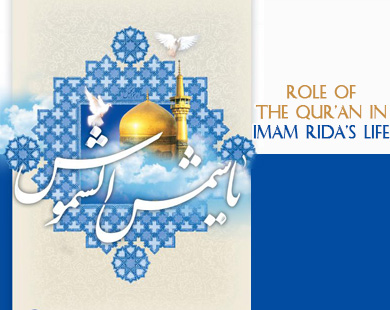Al Imam Al Rida (a.s) during Al Ma'mun Al Abbasi Period
Al Ma’mun is a smart man, which is a point that we can understand from giving the heir apparent Al Imam (a.s). It should be said that Al Ma’mun governance was an exceptional experience. On the other hand, the second party in the battle field was Al Imam Ali bin Mousa (a.s). He himself was changing the intelligent but demonized plans into useless ones with no impacts. There are many examples that prove this. During his period, he used to call for science and knowledge, in public, where scholars were invited to the center of caliphate. He used to give researchers motivating rewards to prepare the base of attraction. In addition, he used to make some actions to attract the Shiite and Al Imam’s followers, such as:
-Saying that Al Imam Ali is the most qualified to be the caliphate after the Prophet Muhammad (pbuh).
-Making the curse of Mouawiya an official behavior.
-Returning the Alawite rights that were stolen from Sayyida Fatima Al Zahraa in Fadak.
As a result, he did his best to satisfy people to be easily able to settle in the boat of the caliphate. [1]
Objectives, Causes and Results of the Heir Apparent:
After the killing of Al Amin, Al Ma'mun assumed the caliphate in the year 198 AH. He entrusted the position of heir apparent to Al Imam (a.s) in the year 201 AH. There were several objectives behind this action, including:
1- Calming Internal Situations:
One year after Al Ma'mun assumed the caliphate, in the year 199 AH, major revolts and widespread uprisings led by the Alawites broke out. Abu Al Saraya Al Sari ibn Mansur Al Shaybani revolted in Iraq, accompanied by Muhammad ibn Ibrahim ibn Ismail Al Hasani, minting coins in Kufa without the Abbasid stamp, and sending his armies to Basra. The rebellion spread across several fronts:
- The Basra front led by Al Abbas ibn Muhammad ibn Isa Al Ja'fari.
- The Mecca front led by Al Husayn ibn Al Hasan Al Aftas.
- The Yemen front led by Ibrahim ibn Musa ibn Ja'far (a.s).
- The Fars front led by Ismail ibn Musa ibn Ja'far (a.s).
- The Ahvaz front led by Zaid ibn Musa.
- The Mada'in front led by Muhammad ibn Sulayman.
Therefore, the primary goal of inviting Al Imam (a.s) to Khorasan was to transform the scene of violent and intense confrontation into a scene of calm political engagement.
2- Stripping the Sanctity and Victimhood from the Revolution:
The Shiites were relentless in their confrontation, knowing neither fatigue or boredom, and their revolution was not confined to any limits. These confrontations had two main characteristics:
-First: Victimhood
-Second: Sanctity[2]
Victimhood was represented by the usurpation of the caliphate, oppression, and killings that Al Imams of Ahlul Bayt (peace be upon them) faced from the time of our Master Imam Ali (a.s) to the time of our Master Al Rida (a.s) and beyond.
As for sanctity, it was embodied by the infallible Imam through his detachment from the ruling apparatus and his leadership of the people according to the pure Muhammadan Islamic methodology.
Al Ma'mun Al Abbasi attempted, through the appointment of the heir apparent, to strip away the sanctity and victimhood that constituted factors of revolutionary influence in the Islamic society.
According to Al Ma'mun's perception, once Al Imam became the heir apparent, he would join the apparatus of governance and execute the king's orders in managing the country. Thus, he would no longer be seen as oppressed or sacred.
3- Legitimizing the Abbasid Caliphate:
The allegiance of Al Ma'mun and the acceptance of Al Imam meant that Al Ma'mun received recognition from the Alawites at the highest level for the legitimacy of the Abbasid Caliphate. He explicitly stated this: "We wanted to make him our heir apparent, so that his prayers would be for us and he would acknowledge our rule and caliphate."
For Al Ma'mun, this allegiance meant that the Imam acknowledged that the caliphate was not exclusively his or solely the right of the Alawites. Therefore, obtaining this recognition from Al Imam (a.s) was more dangerous to the Alawites than the methods employed by his predecessors, both Umayyads and Abbasids, against them, methods that included killing, displacement, and confiscation of their wealth.
Many other objectives of the allegiance have been mentioned in books, such as Al Ma'mun gaining a reputation for piety and reverence, and Al Imam becoming a protector and guide of the regime, among other goals.
* Stations in the Biography of Ahlul Bayt (peace be upon them), Al Maaref Islamic and Cultural Institution
[1] History of Islam, The International Organization for Seminaries, part 3, page 160-161
[2] Refer to: Khamenei, Sayyid Ali, "The Great Lessons from the Biography of Ahlul Bayt (peace be upon them)," page 190-191 (adapted).



















